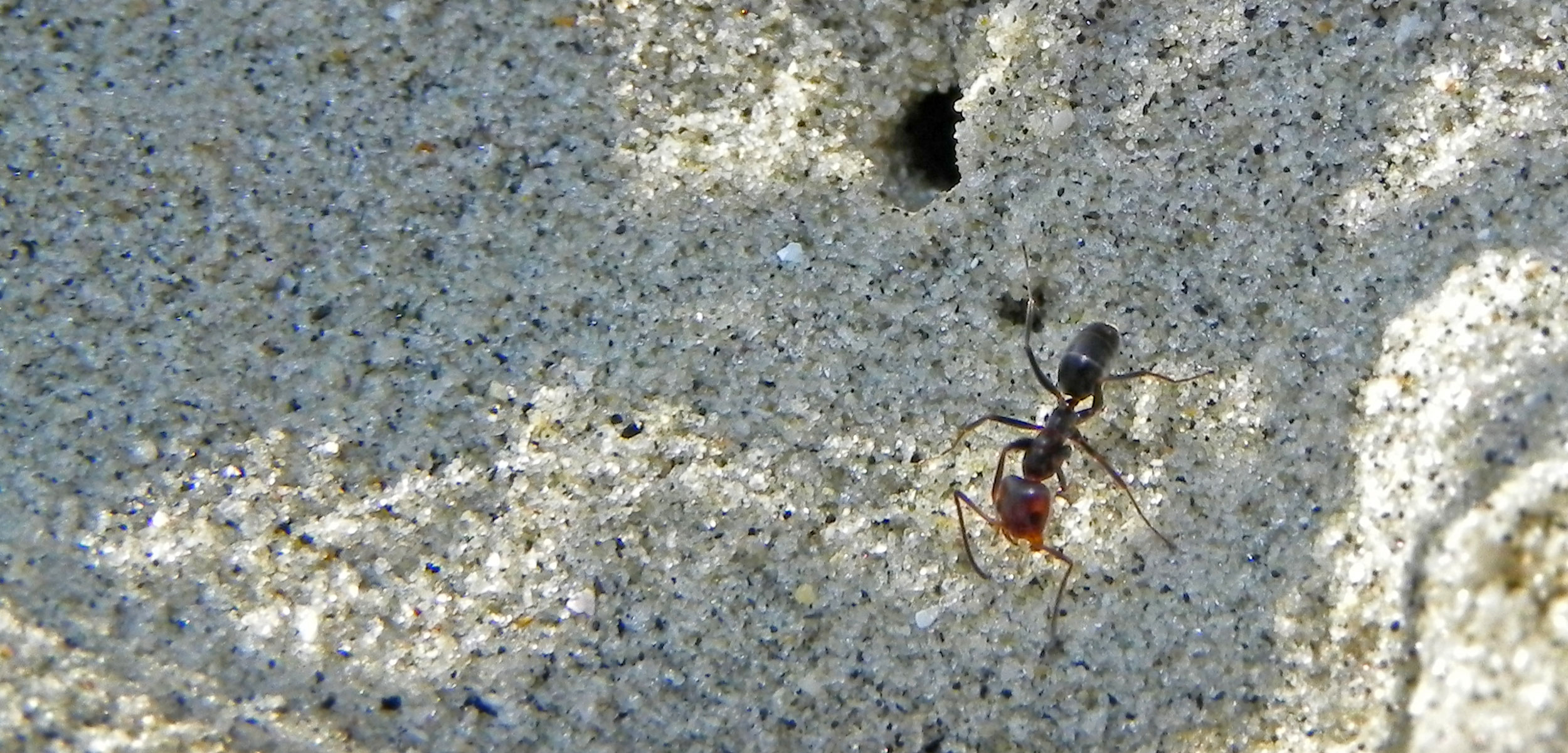The Ants That Picnic on the Beach
A barren Brazilian beach offers a window into how ants forage.
Article body copy
Ants: they’re just like us. They head out into the world each day and search for the resources they need to survive. Their foraging choices, like where to go and what to eat, have been well documented in traditional lab settings. But as a recently published study shows, the broad expanse of a sunny Brazilian beach makes an excellent real-world laboratory. Yes, ants live even here, and an observant researcher has discovered the barren sand offers a window into their foraging strategies.
Mayra Vidal, now an ecologist at Syracuse University in New York, was a master’s student in 2011 doing a field course on Fazenda, an idyllic tropical beach near São Paulo, Brazil, when she noticed ants underfoot. Their colony sat near the top of the beach, adjacent to a broadleaf forest, but as the ebbing tide exposed a smooth 10-meter-wide strip of white sand, the ants spread out across the beach to forage.
This behavior surprised Vidal. The empty beach offered scant food options: just a few nectarous flowers such as the beach morning glory, or the odd dead fish. But then she had an idea. Unlike forests with their ubiquitous carb sources, the beach offered few sugary morsels and thus the rare opportunity to manipulate the availability of sugar in situ. And with no plant cover to block her view, Vidal could easily observe how the ants collected food as they went about their day.
Vidal first identified a handful of colonies, some surrounded by nectar-rich flowering beach plants, and some with few nectar sources nearby. Then she added tiny balls of bait to the study area—a sugar bait of caramel and flour, and a protein bait of dead sardines. She was curious to see if the amount of nectar available to the ants would affect how they utilized the protein and sugar baits.
Vidal noticed clear changes in the ants’ behavior in just 20 minutes. “When colonies already had nectar, they didn’t care about the sugar baits,” Vidal says. All but a few of the ants from these colonies selected the protein baits. However, the more nectar-limited colonies showed much more interest in the sugar baits, with about half the ants seeking out the caramel and the other half seeking out the sardines. In other words, they changed their foraging strategies depending on the relative availability of different foods.
That’s logical behavior, according to ecologist Staffan Lindgren at the University of Northern British Columbia. “They’re looking for the best return on investment,” he says. Since ant foraging ecology has been meticulously modeled in the lab, Lindgren thinks the real novelty here is that Vidal spotted such a suitable setting to do an experiment like this in the wild.
Vidal agrees that studies like hers can help validate laboratory work by watching ants make those choices in the real world. And in case you’re curious, the Brazilian colonies aren’t the only beach ants out there. Vidal says some ants in India have become such intertidal experts that they actually learn to surf. If water touches the ant’s body, it curls up, retracts its legs, and floats on the foam at the front of a breaking wave until it rests back on sand. No word yet on whether they prefer sugar or protein after riding those epic barrels.

